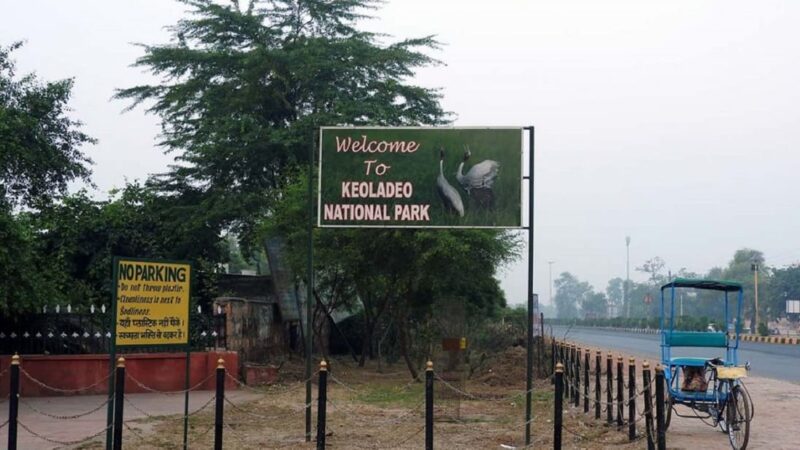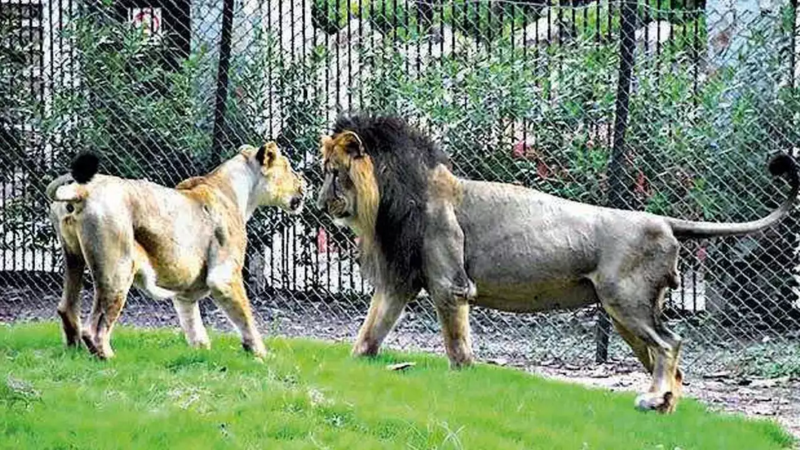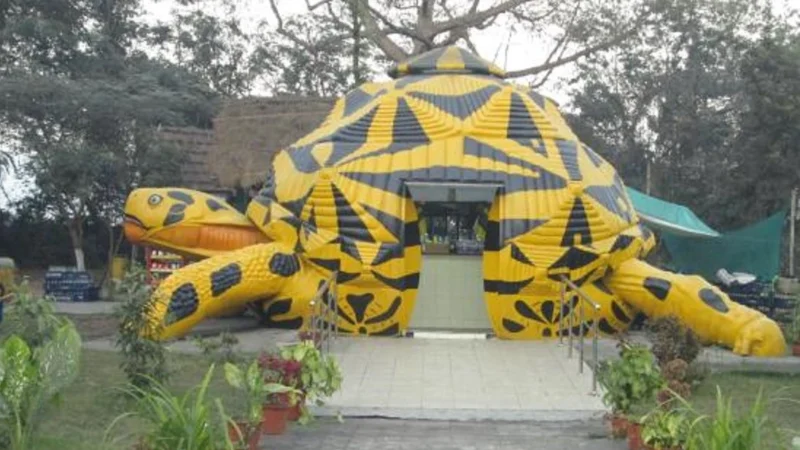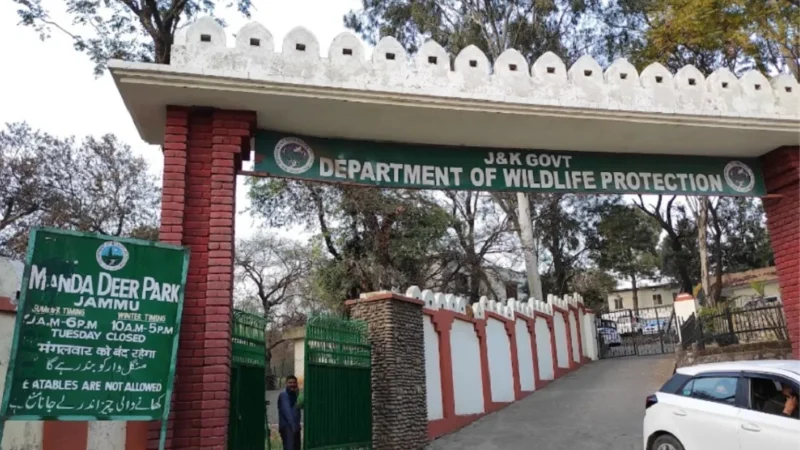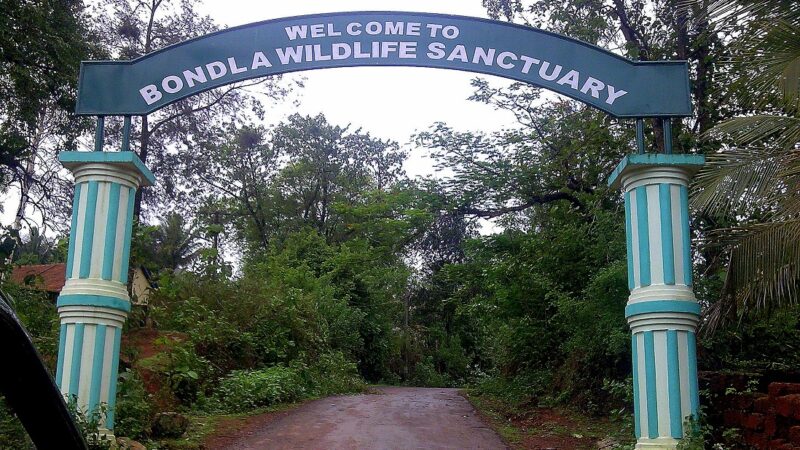Top 15 Wildlife Sanctuary in Gujarat
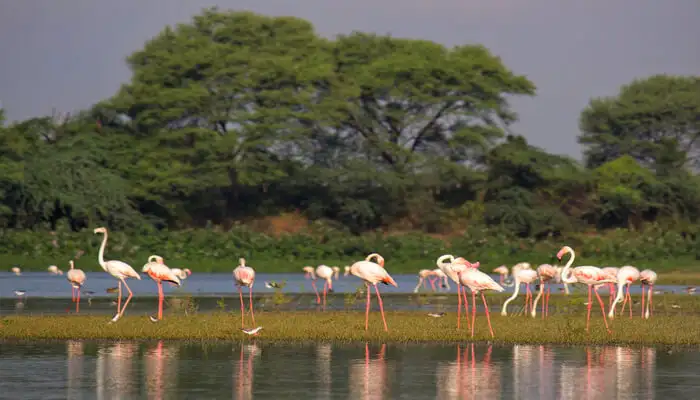
Table of Contents
ToggleGujarat Wildlife Sanctuary
Gujarat, a land steeped in history and cultural heritage, is also a realm of breathtaking biodiversity. Beyond its bustling cities and vibrant markets lies a world teeming with life, hidden within its pristine wildlife sanctuaries. These sanctuaries stand as living testaments to the state’s commitment to preserving its natural wonders and providing a haven for its native flora and fauna.
From the iconic Gir Wildlife Sanctuary, home to the majestic Asiatic lions, to the tranquil Nal Sarovar Bird Sanctuary, where flocks of migratory birds find solace, Gujarat’s wilderness areas beckon both nature enthusiasts and conservationists alike. Each sanctuary tells a unique story of adaptation, survival, and the delicate balance that sustains life on Earth.
Join us on a virtual journey as we traverse the rugged terrains of the Little Rann of Kutch, a sanctuary dedicated to safeguarding the endangered wild ass, and venture deep into the heart of marine life at the Marine National Park in the Gulf of Kutch. We’ll unveil the mysteries of the blackbucks at Velavadar National Park and the vibrant avian tapestry at Khavda Bird Sanctuary.
1- Gir Wildlife Sanctuary
Gir Wildlife Sanctuary is a forest, national park, and wildlife sanctuary near Talala Gir in Gujarat, India. It is located 43 km (27 mi) north-east of Somnath, 65 km (40 mi) south-east of Junagadh and 60 km (37 mi) south-west of Amreli. It was established in 1965 in the erstwhile Nawab of Junagarh’s private hunting area, with a total area of 1,410.30 km2 (544.52 sq mi), of which 258.71 km2 (99.89 sq mi) is fully protected as a national park and 1,151.59 km2 (444.63 sq mi) as wildlife sanctuary. It is part of the Khathiar-Gir dry deciduous forests ecoregion.
The sanctuary is home to the Asiatic lion, the only wild lion population in India. The lion population in Gir has increased from around 200 in the 1960s to over 600 in recent years. The sanctuary is also home to other animals, including leopards, hyenas, jackals, nilgai, chinkara, and antelopes.
The sanctuary is a popular tourist destination, and visitors can take jeep safaris to see the lions and other animals. There are also several hotels and lodges located near the sanctuary.
Here are some of the things you can do in Gir Wildlife Sanctuary:
- Take a jeep safari to see the lions and other animals.
- Visit the Devalia Safari Park, where you can see lions up close.
- Go bird watching, as the sanctuary is home to over 300 species of birds.
- Hike or camp in the forest.
- Visit the Gir Museum, which has exhibits on the history and ecology of the sanctuary.
2- Marine National Park, Gulf of Kutch
The Marine National Park, Gulf of Kutch is situated on the southern shore of the Gulf of Kutch in the Devbhumi Dwarka district of Gujarat state, India. It was established in 1982 and is India’s first marine national park. The park covers an area of 162.9 km² and includes 42 islands.
The park is home to various marine life, including coral reefs, dolphins, sea turtles, and fish. The coral reefs are vital, home to various marine organisms. The park is also an important breeding ground for sea turtles.
The park is a popular tourist destination, and visitors can go snorkelling, scuba diving, and boat riding. There are also several hotels and lodges located near the park.
Here are some of the things you can do in the Marine National Park, Gulf of Kutch:
- Go snorkeling or scuba diving to see the coral reefs and marine life.
- Take a boat ride to explore the islands and mangroves.
- Visit the Interpretation Centre to learn about the park’s ecology.
- Go bird watching, as the park is home to over 200 species of birds.
- Relax on the beach and enjoy the sunset.
3- Wild Ass Sanctuary (Little Rann of Kutch)
The Wild Ass Sanctuary (Little Rann of Kutch) is a wildlife sanctuary in the Little Rann of Kutch, Gujarat, India. It was established in 1972 and covers an area of 4954 km². The sanctuary is home to the endangered Asiatic wild ass, which is the only population of wild asses in India.
The sanctuary is also home to various animals, including the chinkara, desert fox, caracal, and honey badger. It is also a major birding destination, with over 300 species of birds recorded.
The best time to visit the sanctuary is during the winter months, from November to February, when the weather is mild and the water levels are low.
Here are some of the things you can do in the Wild Ass Sanctuary:
- Go on a jeep safari to see the wild asses and other animals.
- Go bird watching, as the sanctuary is home to over 300 species of birds.
- Visit the Interpretation Centre to learn about the sanctuary’s ecology.
- Take a camel ride through the salt flats.
- Relax in a camp in the middle of the desert.
4- Blackbuck National Park (Velavadar National Park)
The Blackbuck National Park (Velavadar National Park) is a national park in India located at Velavadar in the Bhavnagar District of Gujarat state, India. Established in 1976 in the Bhal region of Saurashtra, the park is located around 42 km from the district headquarters city of Bhavnagar. Hugging the coasts of the Gulf of Khambhat on the south, it is spread over an area of 34.08 km², which was primarily a “vidi” (grassland) of the maharaja of the princely state of Bhavnagar for hunting the blackbucks with his famous hunting cheetahs. On the northern side, it is surrounded by wastelands and agriculture fields.
The park is home to a large population of blackbucks, the national animal of India. It is also home to various other animals, including nilgai, chinkara, hyena, jackal, and several bird species.
The park is a popular tourist destination, and visitors can take jeep safaris to see the blackbucks and other animals. There are also several hotels and lodges located near the park.
Here are some of the things you can do in the Blackbuck National Park:
- Take a jeep safari to see the blackbucks and other animals.
- Go bird watching, as the park is home to over 120 species of birds.
- Visit the Interpretation Centre to learn about the park’s ecology.
- Relax in the park’s natural surroundings.
The best time to visit the park is during the winter months, from November to February, when the weather is mild and the park is less crowded.
5- Nal Sarovar Bird Sanctuary
Nal Sarovar Bird Sanctuary is a bird sanctuary located in Gujarat, India. It is situated about 64 km west of Ahmedabad near Sanand Village. The sanctuary is spread over 120.82 square kilometers (46.65 sq mi) and consists of a lake and surrounding marshes.
The sanctuary is home to over 300 species of birds, making it one of India’s most important birding destinations. The most common birds are flamingos, pelicans, and ducks. Other birds seen in the sanctuary include egrets, herons, cormorants, spoonbills, storks, and ibises.
The best time to visit the sanctuary is during the winter months, from November to February, when the weather is mild and the water levels are high. This is when the flamingos arrive in the sanctuary in large numbers.
Here are some of the things you can do in Nal Sarovar Bird Sanctuary:
- Take a boat ride on the lake to see the birds up close.
- Go bird watching from the observation towers.
- Visit the Interpretation Centre to learn about the sanctuary’s ecology.
- Relax in the sanctuary’s natural surroundings.
The sanctuary is a popular tourist destination, and several hotels and lodges located near the sanctuary.
6- Shoolpaneshwar Wildlife Sanctuary
Shoolpaneshwar Wildlife Sanctuary is a protected area in India’s Gujarat state, located in the western Satpura Range south of the Narmada River and is 607.7 km² large. It shares a common boundary with Madhya Pradesh and Maharashtra.
The sanctuary was established in 1982 and is home to various animals, including leopards, sloth bears, hyenas, jackals, nilgai, chinkara, barking deer, and several bird and reptile species. It was originally established for the protection of sloth bears. The Zarwani waterfall inside the jungle drops from a craggy rock face into a deep gorge.
The best time to visit the sanctuary is during the cooler months from November to February, though the months just after the rains are also lush and beautiful.
Here are some of the things you can do in Shoolpaneshwar Wildlife Sanctuary:
- Take a jeep safari to see the animals.
- Go bird watching, as the sanctuary is home to over 200 species of birds.
- Visit the Zarwani Waterfall.
- Hike or camp in the forest.
- Visit the Shoolpaneshwar Mahadev temple, which is dedicated to Lord Shiva.
7- Jessore Sloth Bear Sanctuary
Jessore Sloth Bear Sanctuary is a wildlife sanctuary in the Banaskantha district of Gujarat, India. It was established in 1978 and covers an area of 180.66 square kilometers (69.75 sq mi).
The sanctuary is named after the Jessore hills of the Aravalli range, which lie within its boundaries. The sanctuary is home to various animals, including sloth bears, leopards, hyenas, jackals, nilgai, chinkara, and several bird and reptile species.
The sloth bear is the main attraction of the sanctuary. It is a large, omnivorous bear that is found in the forests of India and Sri Lanka. Sloth bears are known for their long claws and powerful jaws. They are also known for their love of honey, which they often raid beehives to get.
The sanctuary is a popular tourist destination, and several hiking trails and viewpoints are located within its boundaries. The best time to visit the sanctuary is during the cooler months, from November to February.
Here are some of the things you can do in Jessore Sloth Bear Sanctuary:
- Take a jeep safari to see the animals.
- Go bird watching, as the sanctuary is home to over 200 species of birds.
- Hike or camp in the forest.
- Visit the Kedarnath Mahadev temple, which is located within the sanctuary.
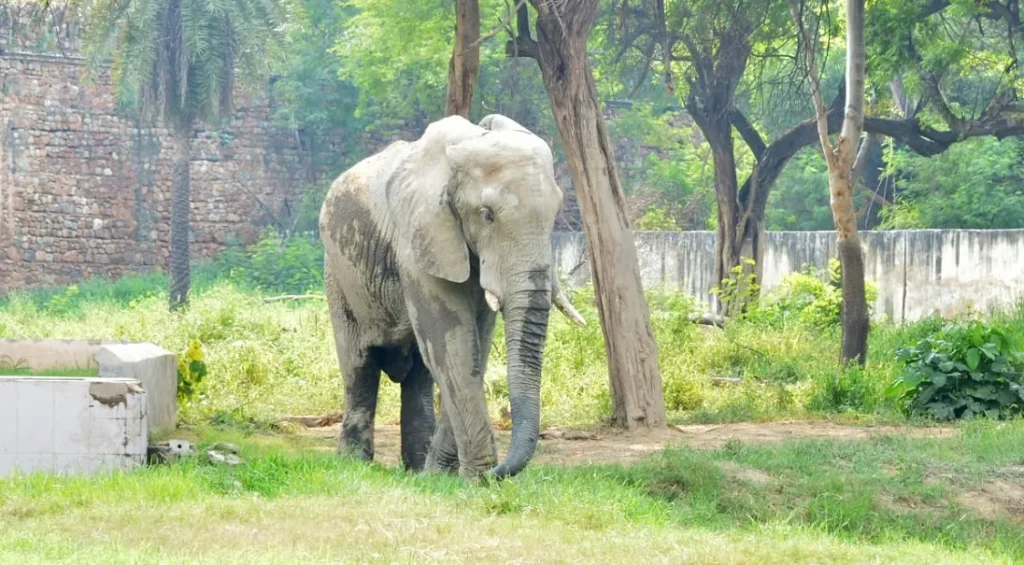
8- Purna Wildlife Sanctuary
Purna Wildlife Sanctuary is a wildlife sanctuary in the Dangs district of Gujarat, India. It was declared a sanctuary in July 1990. It has the thickest forest cover in the state of Gujarat. The sanctuary is spread over 160.84 square kilometers (62.20 sq mi).
The sanctuary has various animals, including leopards, sloth bears, gaur, four-horned antelope, barking deer, sambar, chital, hyena, and jungle cat. It is also home to several bird species, including peacocks, hornbills, and eagles.
The best time to visit the sanctuary is during the cooler months from November to February.
Here are some of the things you can do in Purna Wildlife Sanctuary:
- Take a jeep safari to see the animals.
- jeep safari in wildlife sanctuaries
- Go bird watching, as the sanctuary is home to over 200 species of birds.
- Hike or camp in the forest.
- Visit the Purna Mata temple, which is located within the sanctuary.
9- Gaga Wildlife Sanctuary
Gaga Wildlife Sanctuary is a protected area in Kalyanpur taluka, Devbhumi Dwarka district, Gujarat, India. Established in November 1988, it is 332.87 hectares in size and is situated in the Saurashtra peninsula on the coast of the Gulf of Kutch.
The sanctuary comprises grasslands intermixed with saline scrubs. Prosopis chilensis, kerdo, gorad, piloo etc. are the main flora.
There are several important animal species, such as nilgai, golden jackal, jungle cat, mongoose, and Indian wolf; and avifauna, such as flamingoes, great Indian bustard, lark, partridge, and sand grouse.
The sanctuary houses several migratory birds, including flamingos, pelicans, and ducks. The best time to visit the sanctuary is during the winter, from November to February, when the water levels are high and the birds arrive in large numbers.
Some of the things you can do in Gaga Wildlife Sanctuary:
- Take a jeep safari to see the animals and birds.
- Go bird watching, as the sanctuary is home to over 88 species of birds.
- Visit the Interpretation Centre to learn about the sanctuary’s ecology.
- Relax in the sanctuary’s natural surroundings.
- The sanctuary is a popular tourist destination, and several hotels and lodges located near the sanctuary.
10- Rampara Wildlife Sanctuary
Rampara Wildlife Sanctuary is a protected area in Morbi district of Gujarat, India. Established in November 1988, it is 15 square kilometers in size and is situated in the Aravalli Range.
The sanctuary is home to various animals, including blackbuck, chinkara, nilgai, hyena, jackal, and several bird species.
The sanctuary is named after the Rampara hills, which lie within its boundaries. The hills are a popular destination for hiking and camping.
The best time to visit the sanctuary is during the cooler months from November to February.
Here are some of the things you can do in Rampara Wildlife Sanctuary:
- Take a jeep safari to see the animals.
- Go bird watching, as the sanctuary is home to over 130 species of birds.
- Hike or camp in the Rampara hills.
- Visit the Interpretation Centre to learn about the sanctuary’s ecology.
11- Hingolgadh Nature Education Sanctuary
Hingolgadh Nature Education Sanctuary is a significant wildlife sanctuary in the Devbhoomi Dwarka district of Gujarat, India. It is known for its unique ecological features and focus on environmental education and awareness. Here are some key details about the Hingolgadh Nature Education Sanctuary:
Location: Hingolgadh Nature Education Sanctuary is situated near the town of Jasdan in Devbhoomi Dwarka district, approximately 200 kilometers from the city of Rajkot.
Ecological Importance: The sanctuary is characterized by rocky terrain, cliffs, and scrub vegetation, making it a suitable habitat for various wildlife species. It is a refuge for various bird species, reptiles, and mammals.
Flora and Fauna: The sanctuary is home to diverse flora and fauna, including species like leopards, hyenas, blackbucks, blue bulls (nilgais), various species of birds, reptiles, and more. The unique rocky landscape and scrub vegetation contribute to the sanctuary’s ecological diversity.
Visitor Experience: Hingolgadh Nature Education Sanctuary offers nature trails, interpretive centers, and educational programs to engage visitors in learning about the local ecosystem and conservation efforts. The sanctuary’s focus on education distinguishes it from traditional wildlife sanctuaries.
12- Narayan Sarovar Sanctuary
Narayan Sarovar Sanctuary is a protected area in the Kutch district of Gujarat. It was established in 1981 and covers an area of 444 square kilometers. The sanctuary is home to various animals, including chinkara, blackbuck, desert fox, caracal, wolf, and several bird and reptile species. The sanctuary is also home to the Narayan Sarovar Lake, one of Hinduism’s five sacred lakes.
The sanctuary is located in the arid zone of Kutch. The climate is hot and dry, with temperatures ranging from 25 to 45 degrees Celsius. The vegetation is primarily scrub forest, with a mix of thorny bushes and trees.
The sanctuary is a popular tourist destination. Visitors can take jeep safaris to see the animals, go bird watching, or visit the Narayan Sarovar Lake. The best time to visit the sanctuary is during the cooler months, from November to February.
Here are some of the things you can do in Narayan Sarovar Sanctuary:
- Take a jeep safari to see the animals.
- Go bird watching, as the sanctuary is home to over 184 species of birds.
- Visit the Narayan Sarovar Lake, one of Hinduism’s five sacred lakes.
- Visit the Interpretation Centre to learn about the sanctuary’s ecology.
- Relax in the sanctuary’s natural surroundings.
Narayan Sarovar Sanctuary is a valuable resource for protecting wildlife in the arid zone of Kutch. The sanctuary is home to various animals and plants and is a popular tourist destination.
13- Ratanmahal Sloth Bear Sanctuary
The Ratanmahal Sloth Bear Sanctuary is a wildlife sanctuary in Gujarat’s Dahod district. It was established in 1982 and covers an area of 185.35 square kilometers. The sanctuary is home to various animals, including sloth bears, leopards, hyenas, jackals, nilgai, chinkara, and several bird and reptile species.
The sanctuary is named after the Ratanmahal hills within its boundaries. The hills are a popular destination for hiking and camping.
The best time to visit the sanctuary is during the cooler months from November to February.
Here are some of the things you can do in Ratanmahal Sloth Bear Sanctuary:
- Take a jeep safari to see the animals.
- Go bird watching, as the sanctuary is home to over 200 species of birds.
- Hike or camp in the Ratanmahal hills.
- Visit the Interpretation Centre to learn about the sanctuary’s ecology.
The sanctuary is a popular tourist destination, and several hotels and lodges are located near the sanctuary.
The sanctuary is famous for being home to the sloth bear, a rare and endangered species. Sloth bears are omnivorous bears that are found in the forests of India and Sri Lanka. They are known for their long claws and powerful jaws. They are also known for their love of honey, which they often raid beehives to get.
The sanctuary is also home to various other animals, including leopards, hyenas, jackals, nilgai, chinkara, and several bird and reptile species. The sanctuary is a valuable resource for wildlife protection in the region.
14- Khavda Bird Sanctuary
The Khavda Bird Sanctuary is a bird sanctuary in the Kutch district of Gujarat, India. It was established in 1986 and covered an area of 136.44 square kilometers. The sanctuary is home to various migratory birds, including flamingos, pelicans, ducks, and egrets.
The sanctuary is located in the Rann of Kutch, a large salt marsh. The climate is hot and dry, with temperatures ranging from 25 to 45 degrees Celsius. The vegetation is primarily scrub forest, with a mix of thorny bushes and trees.
The sanctuary is a popular tourist destination for bird watching. The best time to visit the sanctuary is during the winter, from November to February when the water levels are high and the birds arrive in large numbers.
Here are some of the things you can do in Khavda Bird Sanctuary:
- Take a boat ride on the lake to see the birds up close.
- Go bird watching from the observation towers.
- Visit the Interpretation Centre to learn about the sanctuary’s ecology.
- Relax in the sanctuary’s natural surroundings.
The sanctuary is a valuable resource for protecting migratory birds in the region. It is also a popular tourist destination for bird watching.
15- Balaram-Ambaji Wildlife Sanctuary
The Balaram-Ambaji Wildlife Sanctuary is located in the Banaskantha district of Gujarat. It was established in 1989 and covers an area of 542 square kilometers. The sanctuary is home to a variety of animals, including leopard, sloth bear, rhesus macaque, Indian civet cat, Indian porcupine, hyena, wild boar, wolf, jackal, hare, langur, bluebull, and many more.
The sanctuary is named after the two historical temples of Balaram and Ambaji, situated at the opposite corners of the sanctuary. The sanctuary is also home to a variety of plant species, including kadaya, gugal, musali, khair, dhavado, saledi, timru, khakhara, bor, desi baval, bili, dudhi, golar, kanji, indrajav, karanj, arjun sadad, jamun, and behda.
The best time to visit the sanctuary is during the cooler months from October to May. During these months, the weather is pleasant and the animals are more active.
Here are some of the things you can do in Balaram-Ambaji Wildlife Sanctuary:
- Take a jeep safari to see the animals.
- Go bird watching, as the sanctuary is home to over 300 species of birds.
- Visit the Interpretation Centre to learn about the sanctuary’s ecology.
- Relax in the sanctuary’s natural surroundings.
The sanctuary is a popular tourist destination, and several hotels and lodges are located near the sanctuary.
The sanctuary is an essential resource for wildlife protection in the region. It is also a popular tourist destination for those who want to experience the beauty of the Aravalli hills and the rich diversity of wildlife.

